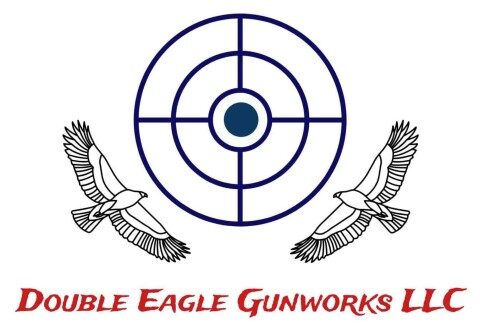If you use your every day carry revolver only occasionally for shooting practice, cleaning it every other month will keep it ready to go. The steps are simple and easy enough that you might be willing to clean it more often:
- Wear gloves and protect your work surface with a soft cloth
- Point the gun in a safe direction
- Activate the cylinder release latch to open the cylinder
- Swing the cylinder out with the first two fingers of your left hand
- Tip the muzzle upward and press the ejector rod to empty the chambers
- Dip your bore brush into the cleaning solvent
- Feed the bore brush through each cylinder from front and back
- Wet cleaning patches with solvent
- Push cleaning patches through the barrel with a cleaning rod until the last one comes out clean
- Use a brush to clean around the muzzle
- Use solvent on a cotton swab to clean the rear cylinder opening
- Brush the cylinders with solvent outside and at the ends
- Clean the extractor with solvent, including the rod and star
- Dip the bore brush in solvent and push it through each cylinder
- Dip patches in solvent and push them through each cylinder
- Shine a flashlight into the barrel and cylinders to check for remaining residue
- Oil the outside of the gun with a clean cloth
Shooting a gun involves pushing a bullet out of the barrel at high speed by exploding the powder behind it in a closed chamber.
The smoke you see comes from the explosion of the gunpowder, and it leaves residue behind. Repeated discharge of the weapon causes the residue to build up and eventually affects the inner workings of the gun.
Fortunately, there is a simple remedy to this problem: clean your gun. For the sake of simplicity, we will limit today’s discussion to the cleaning of a revolver.
Clean your gun a minimum of once a year if it is sitting in a safe unused, because the moisture in the air will eventually corrode it.
Your everyday carry gun needs more frequent cleaning so that it will be ready to defend you the moment you need it: every couple of months if you are not shooting it frequently.
Making time to get to the range keeps your skills honed, and I can tell a difference in my own reactions if I wait too long between practice sessions.
Some instructors advocate a good cleaning with each practice session. This is especially true if your ammunition is corrosive (unlikely with a modern gun) or if the weather is wet or dusty while you are out with your gun. Otherwise you can visit the range several times before you clean it.
The issue is the carbon buildup on the cylinder that can clog the cylinder gap, making it harder to pull the trigger.
Gather Your Supplies
Wear gloves when you clean your gun to keep lead off your skin.
Pick a nice clean work area where you are out of the elements and unlikely to be distracted. Gather your supplies. Use a cloth to protect your work surface.
You can buy a gun kit with everything you need for about fifty dollars or assemble a kit yourself. You will need solvent, lubricant, cleaning patches, a bore brush, a cleaning rod, a gun cleaning brush, a flashlight, cotton swabs, and a cloth.
Try this Hoppes Premium Cleaning Kit from Optics Planet.
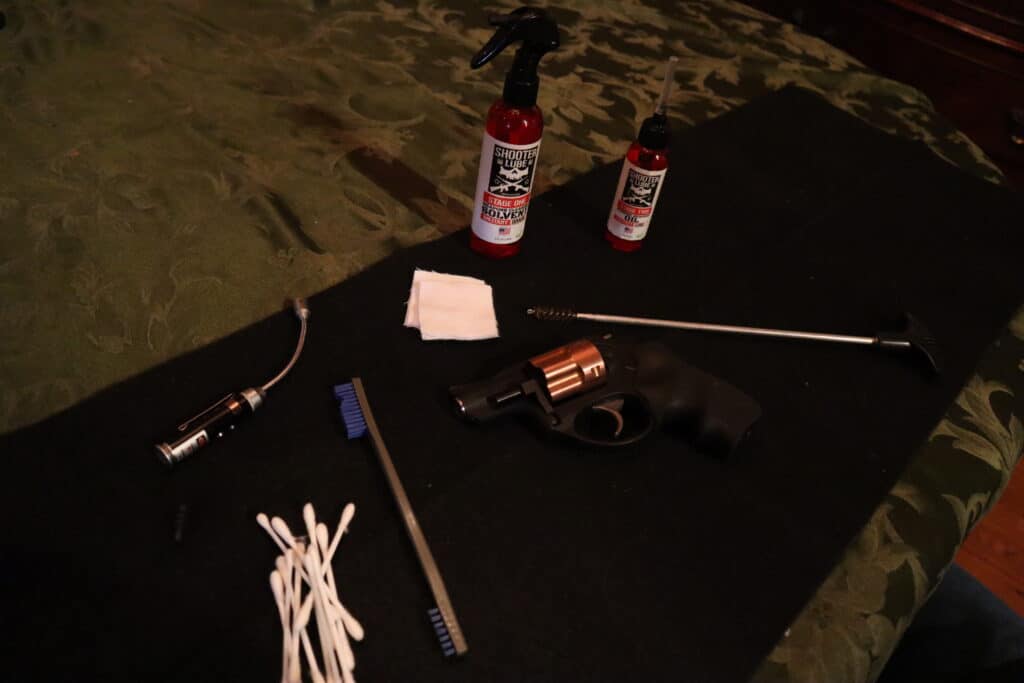
Open The Cylinder and Remove the Ammunition

Start by making sure the gun is unloaded. Open the latch and swing the wheel out. Push the ejector rod to empty the chambers. Look down each chamber to be quite sure.
Even though you now know it is unloaded, follow proper protocol by always pointing the muzzle in a safe direction and keeping your finger out of the trigger.
This is to establish a habit that will keep you and your family safe in all situations. “I thought it was unloaded” should never have to come out of your mouth.
Apply Solvent
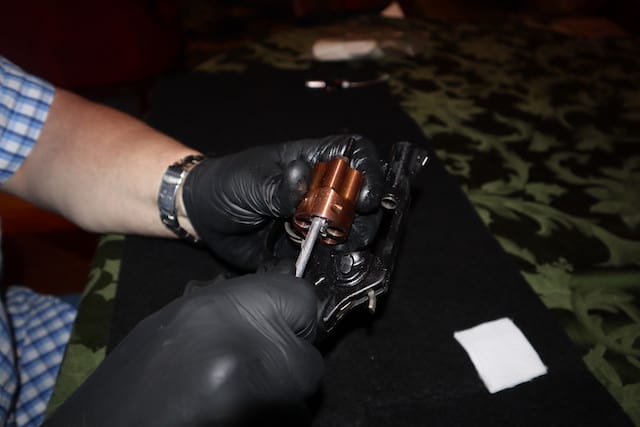
Use a bore brush that matches the size of your barrel. Dip the brush in your cleaning solvent. Feed the brush through each cylinder all the way to the back and pull it back out. Do it again from the opposite direction.
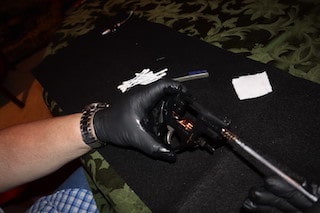
Feed a cleaning patch dipped in solvent through the barrel of the gun with your cleaning rod. Do this with as many patches as it takes to come out clean.
Use a brush to clean around the muzzle of the gun. Use a little solvent on a cotton swab to clean the rear cylinder opening.
Brush the cylinders with additional solvent, outside and at the ends.
Clean the extractor with solvent, including the rod and the star.
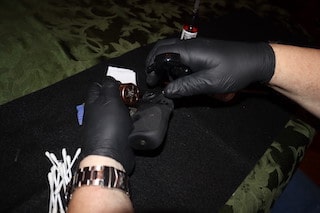
Dip the bore brush in the cleaning solvent and push it through each cylinder as you did with the barrel.
Check Your Work With a Flashlight
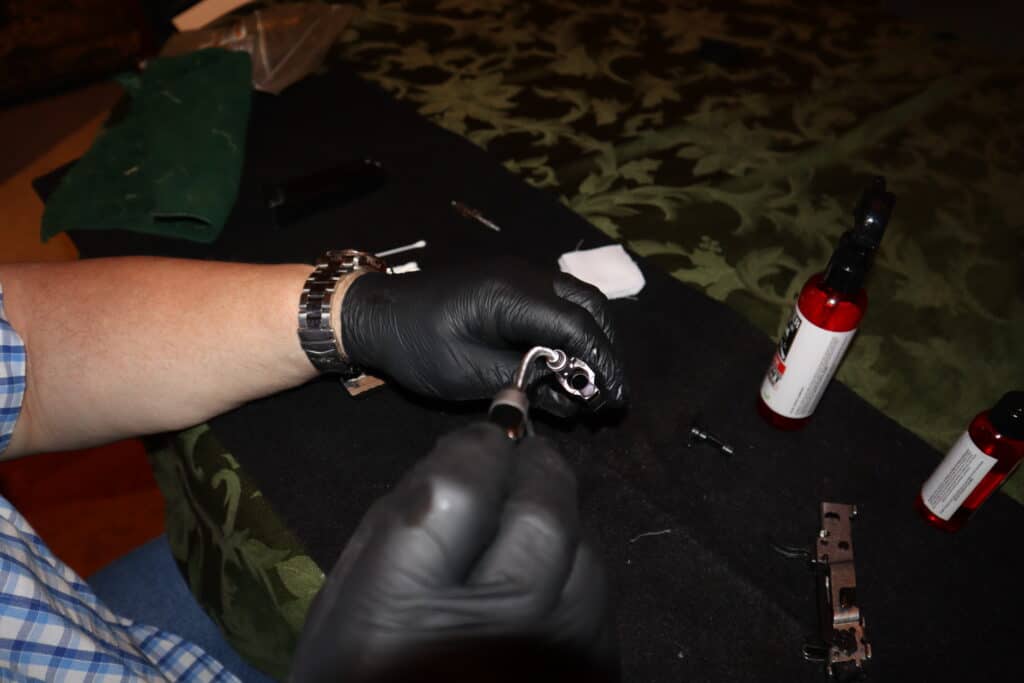
Dip additional patches in the cleaning solvent and push them through each cylinder as you did with the barrel. Shine your light in the barrel and the cylinders to make sure you have removed all the residue.
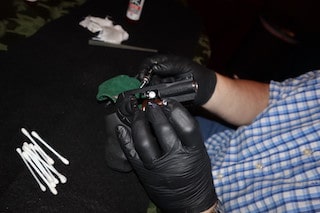
Apply Oil
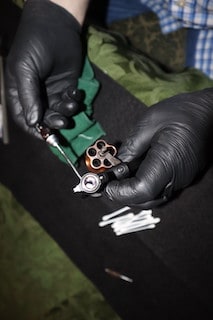
Use a clean cloth to cover the outside of the gun with oil, excluding the grip.
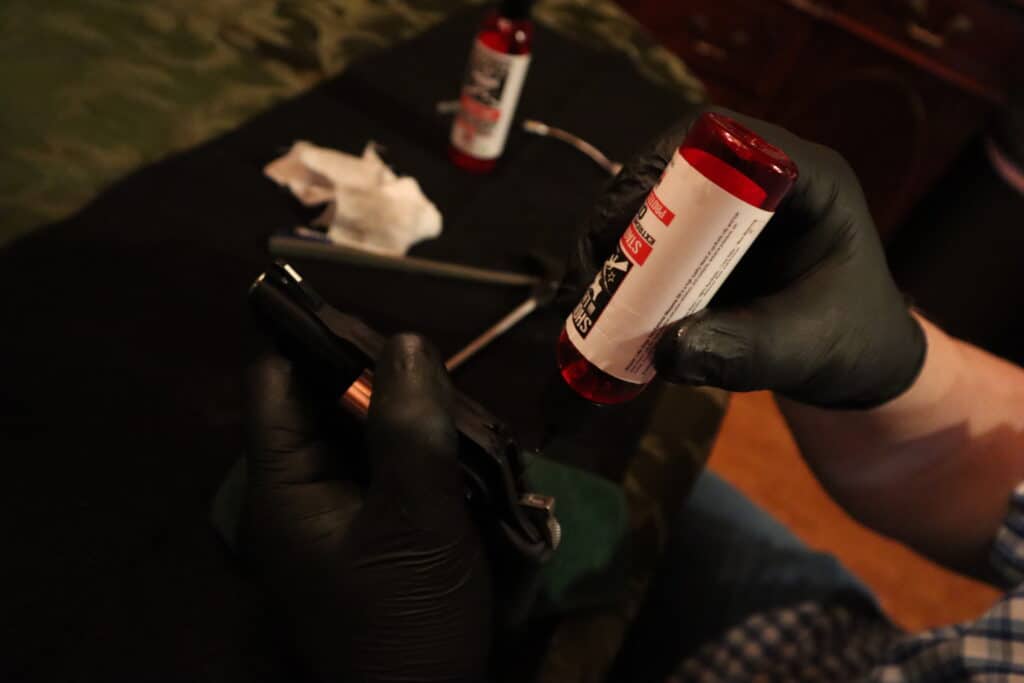
Enjoy your clean and shining gun.
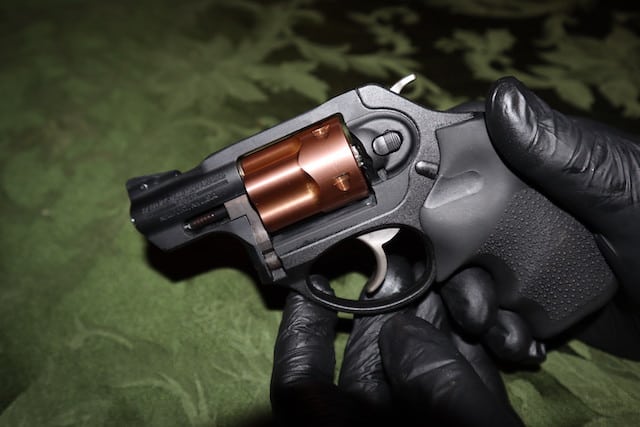
Keep Your Revolver in Good Shape
If you store your gun for long periods, wipe it with a cloth first to remove the oils from your hand to avoid rusting the finish. Store your gun in a low humidity environment.
If you get caught in the rain or your body heat causes condensation when you carry, wipe off the moisture when you retire for the night.
If you drop your gun, inspect it before you use it again to make sure nothing is out of alignment.
If you take your gun from a very cold environment to a hot environment, check your gun for condensation. The same applies when going from a hot environment to a cold one. Carrying the gun on your body will help keep the temperature stable.
Watch informative videos on gun related topics on our Double Eagle Gunworks YouTube channel.
Use our coupon code “double10” to get 10% off your first purchase at the following online retailers:
